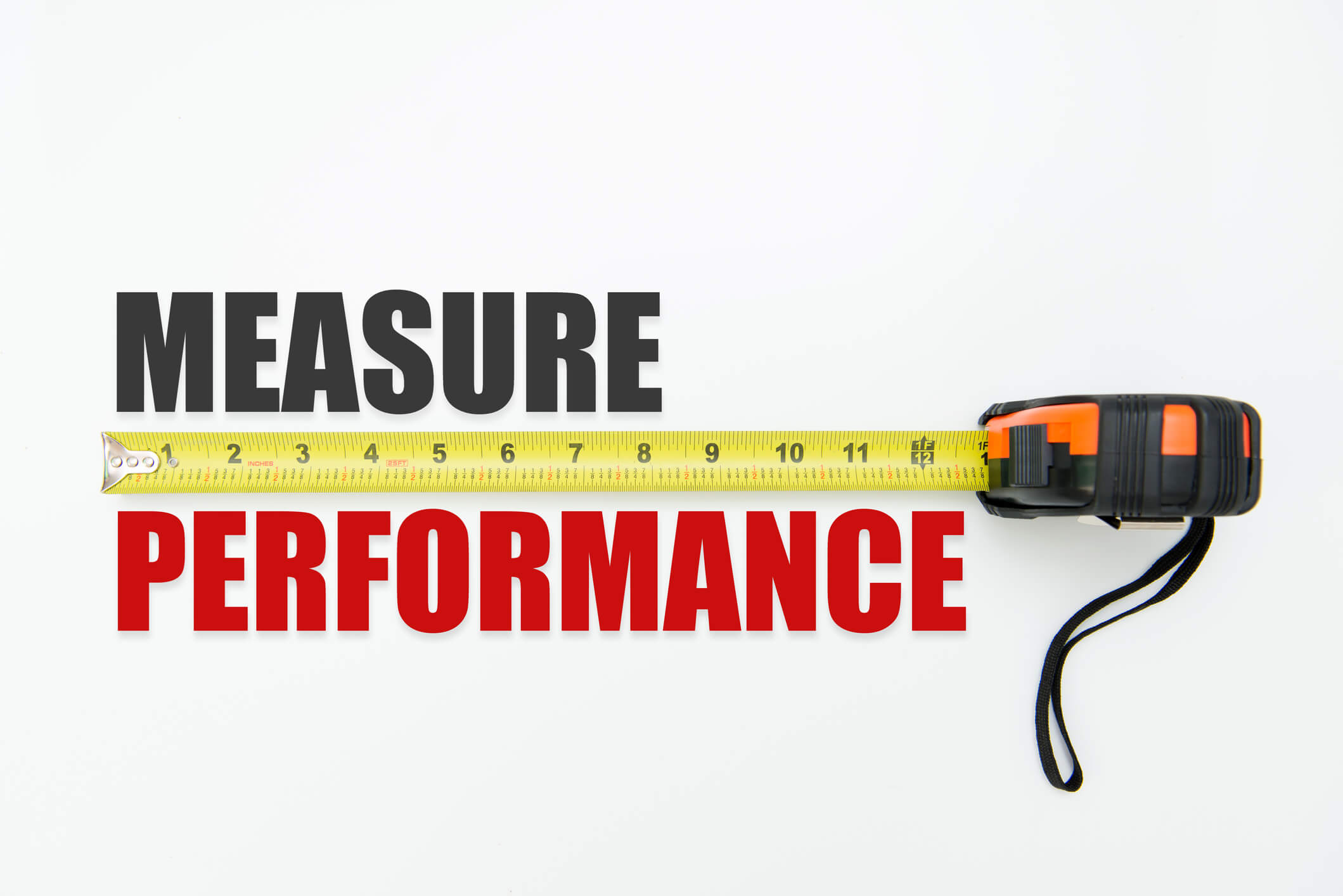By: Jennifer Brazer
Jennifer is the author of From Cubicle to Cloud and Founder/CEO of Complete Controller, a pioneering financial services firm that helps entrepreneurs break free of traditional constraints and scale their businesses to new heights.
Fact Checked By: Brittany McMillen
Master Small Business Accounting: Key Primers for Success
Primers in small business accounting are the foundational financial systems and practices—including business registration, accounting methods, bookkeeping processes, and tax compliance strategies—that create the framework for sustainable business growth and informed decision-making. These essential building blocks determine whether your business thrives with clear financial visibility or struggles with costly mistakes and missed opportunities.
Over my 20 years as CEO of Complete Controller, I’ve witnessed firsthand how the right accounting primers transform chaotic startups into streamlined enterprises. From working with tech startups navigating rapid growth to retail businesses managing inventory complexities, I’ve seen that businesses implementing proper accounting primers from day one are 40% more likely to survive their first five years. This guide reveals the battle-tested strategies that have helped thousands of our clients build financially resilient operations, including specific tools, decision frameworks, and real-world applications that will equip you to make confident financial decisions and scale your business effectively.

What are accounting primers, and why do they matter for small business success?
- Accounting primers are foundational financial practices including business entity selection, accounting method choice, bookkeeping systems, financial reporting processes, and tax compliance strategies
- Business entity selection determines your personal liability exposure and tax obligations
- Accounting method choice (cash vs. accrual) affects when you recognize income and expenses for tax purposes
- Bookkeeping systems create the infrastructure for tracking every financial transaction
- Financial reporting processes provide visibility into profitability, cash flow, and business health
Business Registration: The First Critical Primer
Choosing your business structure sets the foundation for everything that follows—from tax obligations to personal liability protection. The surge in entrepreneurship post-pandemic has been remarkable, with 16 million new U.S. business applications filed between 2021-2023, representing a 56% increase over pre-pandemic levels.
Your entity choice creates ripple effects throughout your financial life. A sole proprietorship offers simplicity but leaves personal assets exposed, while forming an LLC or corporation provides liability protection at the cost of additional compliance requirements. One of our retail clients discovered this lesson painfully when they faced a $15,000 tax bill after operating as a sole proprietorship instead of an S-corporation—a decision that could have saved them thousands in self-employment taxes.
Key Entity Considerations:
- Sole proprietorships expose personal assets but offer pass-through taxation
- LLCs provide liability protection with flexible tax treatment options
- S-corporations can reduce self-employment taxes but require stricter compliance
- C-corporations enable raising capital but face double taxation
The timing of your entity selection matters too. Many businesses start simple and evolve their structure as they grow, but retroactive changes can trigger unexpected tax consequences. Working with both legal and tax professionals during registration prevents costly restructuring later.
Cash vs. Accrual Accounting: Selecting Your Financial Language
The accounting method you choose fundamentally changes how you view your business’s financial health. With 64.4% of small businesses now using accounting software to manage their finances, selecting the right method becomes even more critical as it determines how your software tracks and reports transactions.
Cash accounting operates on a simple principle: you record income when payment hits your bank account and expenses when money leaves. This method works beautifully for service businesses with straightforward operations. A consulting firm earning under $5 million annually can benefit from the clarity of knowing exactly how much cash is available at any moment.
Accrual accounting tells a different story—one of economic reality rather than cash position. You record revenue when earned and expenses when incurred, regardless of payment timing. This method reveals the true profitability of long-term projects and helps businesses with inventory or extended payment terms understand their actual financial position.
Method Selection Framework:
- Choose cash accounting if your business has simple operations and earns under $5 million annually
- Select accrual accounting for inventory-based businesses or those with complex revenue streams
- Consider hybrid approaches for specific situations like long-term contracts
- Evaluate tax implications—cash method may defer income recognition
WidgetCo’s experience illustrates the power of choosing correctly. This manufacturing business saved $1 million in tax deductions by switching from accrual to cash accounting, timing the change to maximize deductible expenses in a high-revenue year. The lesson? Your accounting method isn’t just a technical choice—it’s a strategic tax planning tool.
Building Your Financial Command Center
Creating a robust accounting system transforms overwhelming financial data into actionable business intelligence. The foundation starts with your Chart of Accounts—a customized listing of every account where money flows in or out of your business.
Think of your Chart of Accounts as the filing system for your financial life. Income accounts track revenue streams, expense accounts monitor where money goes, and balance sheet accounts show what you own and owe. The key is finding the sweet spot between detail and simplicity. Too few accounts and you lose visibility; too many and you drown in data.
Essential System Components:
- Chart of Accounts customized to your industry
- Bank reconciliation processes performed monthly minimum
- Document management system for receipts and invoices
- Automated data entry through bank feeds
- Regular financial review meetings
Technology amplifies these makeup base products by automating repetitive tasks. Cloud-based platforms like QuickBooks (used by 69% of small businesses) or Xero (11%) provide real-time financial visibility from anywhere. But software alone isn’t enough—you need consistent processes to maintain data integrity.
I’ve trained countless clients to implement daily financial dashboards, transforming their responsiveness to business changes. One e-commerce client discovered inventory theft only because their daily dashboard showed unusual cost variations. Without that systematic review, the losses could have continued for months.
Bank reconciliation stands as your financial truth detector. By matching your accounting records to bank statements monthly (or weekly for high-volume businesses), you catch errors before they compound. This simple practice has saved our clients from everything from duplicate vendor payments to undetected fraud.
Mastering the Financial Reporting Trinity
Three financial statements form the core of business intelligence: the income statement, balance sheet, and cash flow statement. Together, they tell the complete story of your business’s financial health, each offering a unique perspective on performance.
The income statement reveals profitability over a specific period, showing whether your business model actually makes money. But profit doesn’t equal cash—many profitable businesses fail due to cash flow problems. That’s where the cash flow statement becomes critical, tracking the actual movement of money through your business.
Advanced Reporting Strategies:
- Create customized KPI dashboards tracking metrics like gross margin and customer acquisition cost
- Implement rolling 13-week cash flow forecasts for face primers for oily skin
- Develop scenario planning models for different growth trajectories
- Automate report generation for consistent monthly reviews
Your balance sheet provides the snapshot—what you own (assets) versus what you owe (liabilities) at a specific moment. This statement reveals your business’s financial strength and borrowing capacity. Banks scrutinize balance sheets when evaluating loan applications, making accuracy essential for growth financing.
Beyond basic statements, successful businesses leverage advanced analytics. Gross margin analysis by product line reveals which offerings truly drive profitability. Customer lifetime value calculations inform marketing spend decisions. Inventory turnover ratios highlight efficiency opportunities. These color-correcting primers for redness transform raw data into strategic insights.

Tax Compliance: From Burden to Strategic Advantage
Tax management extends far beyond annual filing—it’s an ongoing strategic process that can significantly impact your bottom line. Small businesses that fail to file taxes on time face penalties up to 5% monthly, maxing out at 25% of unpaid tax, making proactive compliance essential.
Employee classification stands as one of the most common and costly mistakes. Misclassifying employees as contractors can trigger massive penalties, back taxes, and interest charges. The distinction isn’t just about control—it involves multiple factors including behavioral control, financial control, and the type of relationship.
Strategic Tax Management:
- Implement quarterly tax planning sessions, not just year-end scrambles
- Maximize depreciation strategies through Section 179 and bonus depreciation
- Track home office deductions with dedicated oil-free makeup primers
- Understand state nexus rules for multi-state operations
- Document all business expenses contemporaneously
One Complete Controller client discovered $10,000 in annual tax savings simply by correcting their depreciation schedules. They had been using straight-line depreciation on equipment eligible for accelerated methods, missing significant first-year deductions. This example illustrates how silicone-based primers create competitive advantages.
State and local tax compliance adds another layer of complexity. With remote work expanding business boundaries, understanding nexus rules becomes critical. Selling products online might create tax obligations in multiple states, each with unique filing requirements and deadlines.
Scaling Your Accounting Infrastructure
Growth brings complexity, and your accounting system must evolve accordingly. The practices that work for a sole proprietor won’t support a multi-location operation with dozens of employees. Successful scaling requires building best primers for dry skin before you need them.
Multi-currency capabilities become essential for businesses expanding internationally. Exchange rate fluctuations can significantly impact profitability, requiring sophisticated tracking and hedging strategies. Audit-ready documentation practices protect against future scrutiny while enabling faster due diligence during investment rounds or acquisitions.
Growth-Ready Practices:
- Implement role-based access controls in accounting software
- Create documented procedures for all financial processes
- Build redundancy into critical financial roles
- Establish internal controls preventing fraud
- Develop management reporting beyond basic financials
The transition from DIY bookkeeping to professional support marks a critical growth milestone. Many business owners resist this shift, viewing it as losing control. In reality, delegating routine bookkeeping frees you to focus on strategic financial decisions. Beauty salon owners in Baltimore who adopted computerized accounting systems increased their 5-year survival rates by 40%, demonstrating technology adoption as a growth catalyst.
Common scaling mistakes include maintaining personal and business expense commingling long after incorporation, ignoring regular financial reviews in favor of operations focus, and underinvesting in financial talent. Each creates hidden friction that limits growth potential.
Real-World Applications: From Theory to Practice
Throughout my career at Complete Controller, I’ve witnessed remarkable transformations when businesses implement these primers systematically. A retail startup client reduced overstock costs by 20% after implementing accrual accounting and improving inventory visibility. They could finally see the true cost of holding slow-moving inventory and adjust purchasing accordingly.
Another client, a professional services firm, transformed their cash flow by implementing progress billing tied to project milestones. By moving from monthly billing to milestone-based invoicing, they reduced their cash conversion cycle from 67 days to 31 days. This change alone freed up enough working capital to hire two additional team members.
Implementation Success Factors:
- Start with one area and perfect it before expanding
- Invest in training—your team must understand the “why” behind processes
- Schedule regular reviews to catch issues early
- Celebrate small wins to build momentum
- View accounting as strategic intelligence, not compliance burden
The most successful businesses I work with share a common trait: they treat financial primers as non-negotiable operating systems rather than administrative overhead. They understand that strong financial foundations enable everything else—from securing growth capital to making confident strategic decisions.
Moving Forward with Financial Confidence
Mastering these accounting primers positions your business for sustainable success. Strong financial foundations aren’t just about avoiding problems—they’re about creating opportunities. When you know your numbers, understand your cash position, and maintain compliance, you make decisions from strength rather than uncertainty.
The journey from financial chaos to clarity doesn’t happen overnight, but each primer you implement compounds into greater control and confidence. Whether you’re just starting or scaling an established operation, these foundational practices provide the framework for achieving your business vision.
Take action today by assessing which primer needs immediate attention in your business. Start there, build momentum, and systematically strengthen each area. For personalized guidance on implementing these strategies, connect with our expert team at Complete Controller to accelerate your path to financial mastery.

FAQ
What’s the best accounting method for a freelance consultant earning $75,000 annually?
Cash basis accounting typically works best for freelancers and consultants earning under $5 million annually. It offers simplicity in tracking income and expenses while providing clear visibility into actual cash position. However, if you have significant equipment purchases or want to defer income for tax planning, consult a CPA about potential accrual method benefits.
How often should I reconcile my business bank accounts if I process 50+ transactions weekly?
With high transaction volume, weekly reconciliation prevents errors from compounding and makes month-end closing smoother. Set aside 30 minutes each Monday to match the previous week’s transactions. This frequency also helps detect fraud or errors quickly, potentially saving thousands in losses.
Can accounting software like QuickBooks automatically calculate and file my sales tax?
Yes, modern platforms including QuickBooks, Square, and Xero offer automated sales tax calculation based on transaction location and product type. Many also integrate with tax filing services to automate returns. However, you remain responsible for accuracy, so review calculations monthly and understand your nexus obligations.
What should I do if I’ve been mixing personal and business expenses in my Chart of Accounts?
First, stop immediately—open a dedicated business bank account and credit card. Then, work backwards through your records, categorizing each transaction as business or personal. Adjust your books accordingly and consult a tax professional about potential amended returns. Going forward, maintain strict separation to preserve liability protection and simplify tax filing.
When is the right time to transition from cash to accrual accounting?
Consider transitioning when your business has inventory, offers credit terms to customers, receives prepayments for future services, or approaches $5-10 million in revenue. Work with an accountant to restate prior period balances and time the switch for minimal tax impact—typically at the beginning of a tax year.
Sources
- CarsonThorn CPA. “Small Business Accounting 101.” https://carsonthorncpa.com/small-business-accounting-101
- IRS.gov. “Small Businesses & Self-Employed.” Internal Revenue Service. https://www.irs.gov/businesses/small-businesses-self-employed
- Investopedia. “Income Statement Guide.” https://www.investopedia.com/terms/i/income-statement.asp
- Nerdwallet. (2023). “Small Business Statistics.” https://www.nerdwallet.com/article/small-business/small-business-statistics
- Plantemoran. (2021). “Simplified Accounting Methods for Small Business Taxpayers.” https://www.plantemoran.com/explore-our-thinking/insight/2021/02/simplified-accounting-methods-for-small-business-taxpayers
- Rippling. “10 Tips on How to Manage Small Business Finances.” https://www.rippling.com/blog/small-business-finances
- SBA.gov. “Manage Your Business Taxes.” U.S. Small Business Administration. https://www.sba.gov/business-guide/manage-your-business/manage-your-taxes
- Sodowsky Law Firm. (2024). “Small-Business Tax Penalties.” https://sodowskylaw.com/small-business-tax-penalties
- Statista. (2016). “Small Business Accounting Software Adoption.” AccsaGlobal. https://accsaglobal.org/facts-and-statistics
- Stripe. “Accounting for Startups 101.” https://stripe.com/resources/accounting-for-startups
- SUNY Empire.edu. “Bookkeeping 101.” https://www.suny.edu/bookkeeping-101
- Walden University. (2021). “Strategies to Transition to Computerized Accounting.” Bullock, Y. https://scholarworks.waldenu.edu/cgi/viewcontent.cgi?article=11298&context=dissertations
 About Complete Controller® – America’s Bookkeeping Experts
About Complete Controller® – America’s Bookkeeping Experts Complete Controller is the Nation’s Leader in virtual bookkeeping, providing service to businesses and households alike. Utilizing Complete Controller’s technology, clients gain access to a cloud platform where their QuickBooks™️ file, critical financial documents, and back-office tools are hosted in an efficient SSO environment. Complete Controller’s team of certified US-based accounting professionals provide bookkeeping, record storage, performance reporting, and controller services including training, cash-flow management, budgeting and forecasting, process and controls advisement, and bill-pay. With flat-rate service plans, Complete Controller is the most cost-effective expert accounting solution for business, family-office, trusts, and households of any size or complexity.




 About Complete Controller® – America’s Bookkeeping Experts Complete Controller is the Nation’s Leader in virtual bookkeeping, providing service to businesses and households alike. Utilizing Complete Controller’s technology, clients gain access to a cloud platform where their QuickBooks™️ file, critical financial documents, and back-office tools are hosted in an efficient SSO environment. Complete Controller’s team of certified US-based accounting professionals provide bookkeeping, record storage, performance reporting, and controller services including training, cash-flow management, budgeting and forecasting, process and controls advisement, and bill-pay. With flat-rate service plans, Complete Controller is the most cost-effective expert accounting solution for business, family-office, trusts, and households of any size or complexity.
About Complete Controller® – America’s Bookkeeping Experts Complete Controller is the Nation’s Leader in virtual bookkeeping, providing service to businesses and households alike. Utilizing Complete Controller’s technology, clients gain access to a cloud platform where their QuickBooks™️ file, critical financial documents, and back-office tools are hosted in an efficient SSO environment. Complete Controller’s team of certified US-based accounting professionals provide bookkeeping, record storage, performance reporting, and controller services including training, cash-flow management, budgeting and forecasting, process and controls advisement, and bill-pay. With flat-rate service plans, Complete Controller is the most cost-effective expert accounting solution for business, family-office, trusts, and households of any size or complexity.













